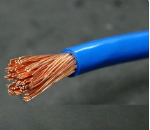
3D printing, also known as additive manufacturing or rapid prototyping, is a manufacturing technology that creates three-dimensional objects by stacking materials layer by layer. It can use a wide variety of materials, including plastics, metals, ceramics, and biological materials, depending on the application and the capabilities of the machine. This technology finds widespread applications in various fields, including manufacturing, construction, healthcare, aerospace, art, and design. There are several impressive applications of 3D printing in the world today, and here are some specific examples:
**Healthcare - Custom Medical Implants:** 3D printing technology plays a significant role in healthcare, with one notable application being the manufacturing of custom medical implants such as artificial joints, dental implants, and prosthetics. These implants need to fit a patient's body perfectly to ensure optimal function and comfort. Traditional manufacturing methods struggle to achieve this level of customization, while 3D printing can precisely create implants tailored to a patient's anatomy.
For instance, consider artificial joints. Doctors can obtain detailed images of a patient's joint using CT scans or MRI scans. These images are then input into a 3D printer, which uses suitable materials to layer by layer construct an artificial joint that perfectly matches the patient's joint. This ensures quicker recovery for patients after surgery, reducing the risk of complications.
The manufacturing of customized medical implants not only enhances the quality of life for patients but also reduces surgery time and complexity, bringing innovation and improvements to the healthcare industry. This is just one example of 3D printing applications in healthcare, similar techniques are used to manufacture personalized braces, skull reconstructions, hearing aids, and other medical devices.
**Aerospace - 3D Printing of Engine Components:** The aerospace industry has been actively exploring and adopting 3D printing technology to improve the performance, reduce weight, and lower production costs of aircraft and rockets. One significant application is the manufacturing of engine components, which require high precision and resistance to high temperatures.
Traditional engine components are often assembled from multiple parts, increasing complexity and assembly costs. By using 3D printing, engineers can create a single complex part to replace multiple traditional components. This not only reduces assembly time but also reduces potential points of failure between parts.
Furthermore, 3D printing allows for the easy production of intricate internal structures and cooling channels, which contribute to improved engine efficiency and performance. The technology also enhances design flexibility, making rapid prototyping and performance testing easier.
Major aerospace engine manufacturers such as GE and Rolls-Royce have widely adopted 3D printing technology in their engines, improving fuel efficiency, reducing engine weight, and extending engine life. The adoption of this technology signifies the aerospace industry's move towards a more efficient and sustainable future.
**Automotive Industry - Rapid Prototyping and Custom Parts:** Automotive manufacturers extensively use 3D printing technology to enhance product design, reduce development time, and produce customized components.
Firstly, 3D printing is employed in the automotive design process for rapid prototyping. Car manufacturers can quickly create 3D-printed prototypes to identify design issues in the early stages of product development, optimize component fit, and reduce prototype manufacturing time and costs. This makes it easier for automotive companies to experiment with different design concepts and accelerate the development cycle of new vehicle models.
Secondly, 3D printing is used in the automotive industry to manufacture custom parts. This includes the production of complex components, customized interiors, and functional prototypes. For example, some car manufacturers allow customers to choose personalized interior components and parts that can be manufactured using 3D printing. This not only increases customer satisfaction but also reduces inventory costs as parts no longer need to be mass-produced and stored.
Finally, 3D printing is employed in automotive maintenance and repair. Repair shops can use 3D printing to manufacture replacement parts for older vehicle models, even if those parts are no longer in production. This reduces repair time, extends the life of vehicles, and decreases the disposal of old parts.
In summary, 3D printing technology is widely applied in the automotive industry, improving product design and manufacturing efficiency while offering customers more personalized choices. It's a valuable tool for automotive manufacturers to meet the evolving demands of the market.
**Construction Industry - 3D Printed Building Structures:** 3D printing technology is emerging in the construction industry, allowing for the construction of building structures, walls, and floors, among other components, using large-scale 3D printers. This technology can accelerate the construction process, reduce material waste, and provide more design flexibility.
Specific applications in the construction industry include:
**Manufacturing Building Structures:** 3D printing can be used to manufacture external walls, internal walls, and columns for buildings. These components can be customized according to design requirements and are often quicker to construct, reducing construction time.
**Architectural Prototyping:** Architects can utilize 3D printing technology to create architectural prototypes, enabling a better understanding of design concepts and showcasing building models to clients. This aids in design and functional testing before actual construction begins.
**Eco-Friendly Construction:** 3D printing offers opportunities for eco-friendly construction by using sustainable materials and efficient designs, reducing energy consumption and waste, ultimately
contributing to more environmentally friendly buildings.
**Building Restoration and Preservation:** 3D printing can be employed in the restoration and preservation of buildings, including the creation of replacement parts for historical structures.
Of these applications, one of the most promising is the use of 3D printing technology to construct homes and building structures. Research and experimental projects in this field are ongoing worldwide, aiming to address housing shortages and improve construction efficiency using 3D printing. As the technology continues to advance, applications of 3D printing in the construction industry are expected to expand further.






 Customer service 1
Customer service 1  Customer service 2
Customer service 2